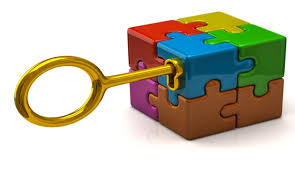By Dave Berkus, Chairman Emeritus, Tech Coast Angels
OK. We know that an executive’s job is not easy. Nor is there much time in a typical day for outreach of any kind. Especially in your growing company, you are drawn into daily process issues by all of your direct reports, often responding to questions and problems, leaving little time for strategic thought.
That’s bad behavior!
And that behavior results in leaving little time for outreach to the most critical component  in your chain – your key customers. During CEO roundtables which I attend regularly, fellow CEO’s analyze a compatriot’s use of time during the once-a-year personal presentations each makes in turn. If the presenting CEO is honest in the analysis of actual time spent each week, it is often revealing to all to see how many hours are spent turning inward toward meetings, operational management, or responding to emails or texts sent by others.
in your chain – your key customers. During CEO roundtables which I attend regularly, fellow CEO’s analyze a compatriot’s use of time during the once-a-year personal presentations each makes in turn. If the presenting CEO is honest in the analysis of actual time spent each week, it is often revealing to all to see how many hours are spent turning inward toward meetings, operational management, or responding to emails or texts sent by others.
Then, what is a benchmark for customer outreach?
As a group, we set a bar of fifteen percent as the minimum amount of time each week that a good CEO should spend reaching out to the company’s key customers in a proactive attempt to find issues, trends, unmet product needs, and of course create bonds that make their jumping to a competitor more difficult.
But, do your customer know that they want?
We all remember the story of FedEx, where future customers didn’t know they wanted “absolutely, positively overnight” until they saw what that could do to make their businesses more competitive.
Find the pain
 Do customers know what they want from their suppliers for future products? We often ask our sales people to “find the pain” and show how our product solves that pain problem. But it was Henry Ford who famously said, “If I’d asked my customers what they wanted, they would have said ‘a faster horse’.” Some new products arrive with no frame of reference. FedEx, the automobile, the Internet, and many more examples, prove that there can be a significant market for ground-breaking ideas.
Do customers know what they want from their suppliers for future products? We often ask our sales people to “find the pain” and show how our product solves that pain problem. But it was Henry Ford who famously said, “If I’d asked my customers what they wanted, they would have said ‘a faster horse’.” Some new products arrive with no frame of reference. FedEx, the automobile, the Internet, and many more examples, prove that there can be a significant market for ground-breaking ideas.
Show them a prototype
Do customers know what they like when they see it? Of course, they do. So why not show a prototype, asking for input to improve it or adapt it to the needs of the customer? With that kind of interaction, the customer becomes a partner in development, tied to the success of its outcome and much more willing to purchase it when completed.
Build relationships from the top
Is business built upon good relationships? Of course, it is. And who is best to create closer relationships at the top than two CEO’s speaking personally without distraction? I have won deals after forming such trusting relationships and have lost deals to those who have beaten me to the opportunity.
The challenge is also the opportunity. A good CEO spends time with critical customers and values the feedback and relationships that result.
